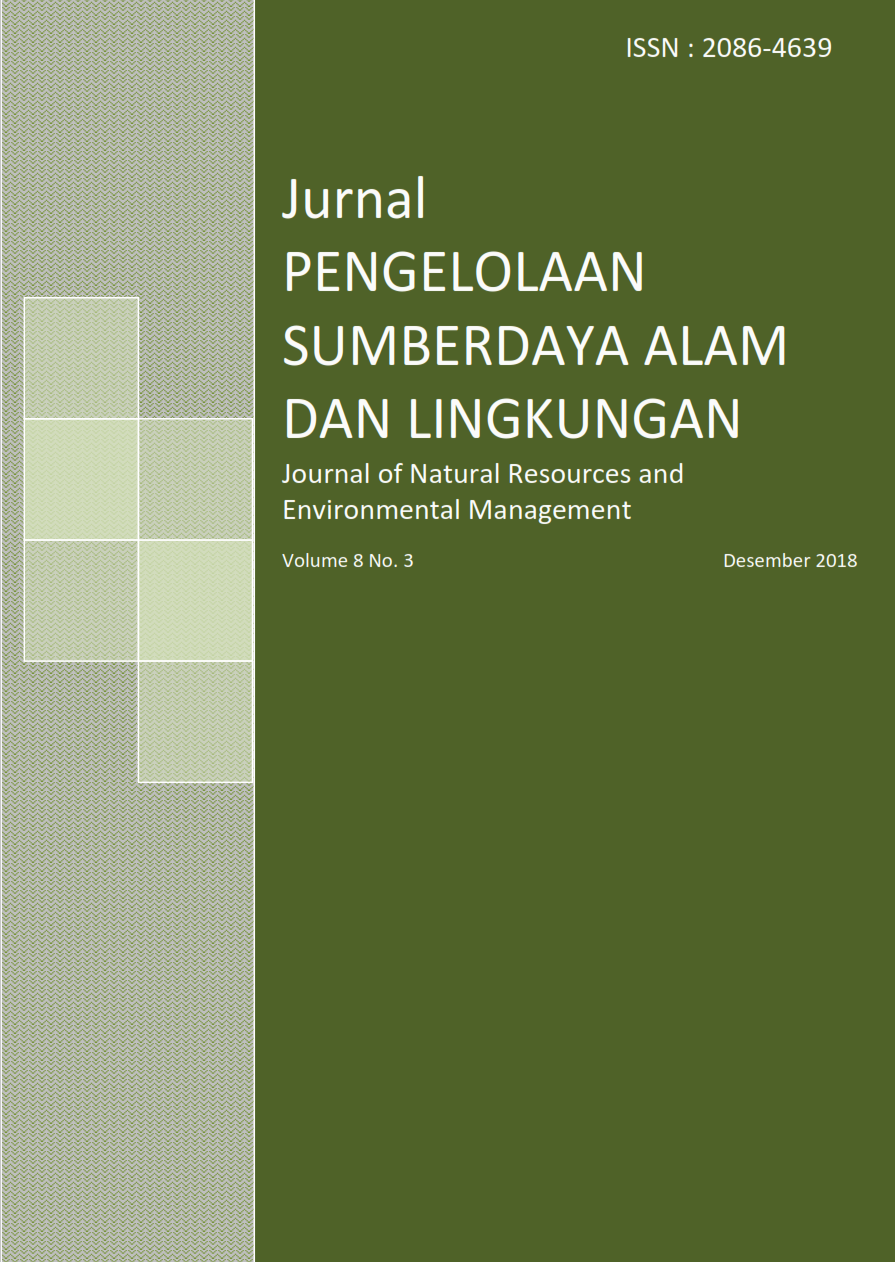IDENTIFIKASI MIKROBA POTENSIAL FUNGI MIKORIZA ARBUSKULA (FMA) PADA LAHAN PASCATAMBANG PT. HOLCIM INDONESIA Tbk. CIBINONG, BOGOR, JAWA BARAT
Abstract
References
Abbott, L. K., and Robson, A. D. 1982. “The Role of VA mycorrhizae fungsi in agriculture and the se-lection of fungi for inoculation”. Journal Agricultur 33: 389-395.
Abbott, L. K and Robson, A. D.1984. The effect of mycorrhizae on plant growth. CRC Press, Inc. Boca Raton. Florida.
Allen MF, 1992. Mycorrhizal Functioning. Chapman and Hall, New York. 126.
Aggangan NS, Dell B dan Malakezuk N, 1998. Ef-fect of chromium and nickel on growth of the ecto-mycorrhizal fungus Pisolithus dan formation of ec-tomycorrhizae on Eucalyptus urophylla. S. T. Blake Geoderma, 84: 33–39
Azwir L. 2001. Dampak Aktifitas Industri PT Semen Padang terhadap Kualitas Air Sungai Limau-Limau: Kasus di Sumatera Barat. Tesis. Bogor: Program Pascasarjana, Institut Pertanian Bogor.
Baon, J. B. 1998. Peranan Mikoriza VA Pada Kopi Dan Kakao. Makalah disampaikan dalam workshop aplikasi fungi mikoriza arbuskula pada tanaman pertanian, perkebunan dan kehutanan. Bogor.
Brundrett, M. C,, Bougher, N., Dells, B., Grove, T., dan Malajozuk, N. 1996. Working with mycorrhizas in forestry and agriculture. Australian Centre for In-ternational Agricultural Research : Canberra.
Brundrett M, 2006. Mycorrhizae-mutualistic plant fungus symbioses. (35 pictures). http://mycorrhiza.ag.utk.edu/
Biwas JC. 2000. Rhizobia Inoculation Improves Nutrient Uptake and Growth of Lowland Rice. Soil Sci. Soc. Am J (64): 1644-1650.
Cahyono A. 2001. Daerah, Jangan dibunuh Oleh Prasangka Yang Tidak terbukti. http://www.mailarchive.com/lingkungan@indoglobal.com/msg01314.html.
Daniels, B. A. H., dan Trappe, J. M. 1980 . “Factors affecting spora germination of the VAM fungus, Glomus epigaeus”. Mycology 72 : 457- 463.
Doran JW. 2000. Soil Health and Sustainability: Managing the Biotic Component of Soil Quality. Applied Soil Ecology. (14): 223-229.
Delvian. 2003. Keanekaragaman dan potensi pem-anfaatan cendawan mikoriza arbuskula (CMA) di Hutan Pantai. Program Pasca Sarjana Institut Per-tanian Bogor : Bogor.
INVAM. 2009. International culture collection of (vesicular) arbuscular mycorrhizal Fungi. URL:http://invam. caf. wvu. Edu/Myco - info .
Janouskova, M., Pavlikova, D., dan Vosatka, M. 2006. “Potensial contribution of arbuscular mycorrhiza to cadmium immobili sation in soil”. Chemosphere 65 (11): 1959 - 1965.
Lakitan B. 2000. Dasar-dasar fisiologi tumbuhan. PT. Raja Grafindo Persada. Jakarta.
Maas, E.V. dan Nieman, R. H. 1978. “Physiology of plant tolerance to salinity. Dalam GA Jung (Ed). Crop tolerance to suboptimal land conditions”. ASA Spec : 277-299.
Manan S. 1993. Pengaruh mikoriza pada pertum-buhan semai Pinus merkusi di persemaian. Kuliah silvikultur umum. Fakultas Kehutanan IPB. Bo-gor : 247-261.
Marx, D. H. 1982. Mycorrhiza in interaction with other microorganism. In Method dan Principles of mycorrhizal research. The Am. Phyt. Soc Minesso-ta : 225 – 228.
Moreira., Dilmar., dan Tsai, S. M. 2007. “Biodiver-sity dan Distribution Of Arbuscular Mycorrhizal Fungi In Araucaria angustifolia Forest”. Journal agriculture 64 : 393-399.
Pfleger FL dan Linderman RG, 1996. Mycorrhizae and plant health. APS Press. The American Phyto-pathology Society St. Paul, Minnesota, 274.
Pujianto. 2001. Pemanfaatan Jasad Mikro, Jamur Mikoriza Dan Bakteri Dalam Sisitem Pertanian Berkelanjutan Di Indonesia, Tinjauan dari prespektif falsafah Sains. Makalah Falsafah Sains Program Pasca Sarjana Institut Teknologi pertanian Bogor.
Qualls RG. 2000. Phosphorus Enrcment Effects Litter Decomposition, Imobilization and Soil Micro-bial Phosphorus in wetland Mesocosms. Soil Sci. Soc. Am.J. (64): 799-808.
Schenck, N.C., dan Schroder, V. N. 1974. “Tem-perature response of endogone micorrhiza on soy-bean roots”. Mycologia 66 : 71.
Solaiman MZ and Hirata H, 1995. Effect of indige-nous arbuscular mycorrhizal fungus and root effect on soil aggregation. Soil Sci. Soc. Am. J. 57: 77–81
Setiadi, Y. 2001. Peranan mikoriza arbuskula dalam reboisasi lahan kritis di Indonesia. makalah seminar penggunaan CMA dalam sistem pertanian organik dan rehabilitas lahan. Bandung. 21-23 April 2001.
Siradz, S. A. dan Kabirun. 2007. “Pengembangan lahan marginal pesisir pantai dengan bioteknologi masukan rendah”. Jurnal Ilmu Tanah dan Ling-kungan 7 : 83-92.
Nuhamara ST, 1994. Peranan Mikoriza Untuk Reklamasi Lahan Kritis. Program Pelatihan Biologi dan Bioteknologi Mikoriza. Institut Pertanian Bo-gor, Bogor.
Nusantara DA., Bertham HY., Mansur I, 2012. Bekerja dengan Fungi Arbuskula. Fakultas Kehu-tanan IPB dan SEAMEO BIOTROP. Bogor, Indone-sia.
Prihastuti, 2007. Isolasi dan karakterisasi Mikoriza Vesikular-Arbuskular di Lahan Kering Masam, Lampung Tengah. Berk.Penel.Hayati.12 (99-106).
Saptiningsih E, 2001. Pertumbuhan Vigna radiate L. Wilezeck Dalam Persaingan Dengan Cyperus rotun-dus L. Pada Perlakuan Inokulasi Rhizobium Dan Mikorhiza Arbuskula. Fakultas Biologi. Program Pascasarjana Universitas Gajah Mada. Jogjakarta.
Solaiman MZ and Hirata, 1995. Effect of indige-nous Arbuscular Mycorrhizal Fungi in Paddy Fields on Rice Growth and NPK nutrition Under Different water regimes. Soil Sci. Plant Nutr., 41 (3): 505-514.
Van Brugen AHC. 2000. In Search of Biological Indicators for Soilhealth and Disease Supression. Applied Soil Ecology (15) 25-36.
Authors
Authors who publish with this journal agree to the following terms:
- Authors retain copyright and grant the journal right of first publication with the work simultaneously licensed under a Creative Commons Attribution License that allows others to share the work with an acknowledgement of the work's authorship and initial publication in this journal.
- Authors are able to enter into separate, additional contractual arrangements for the non-exclusive distribution of the journal's published version of the work (e.g., post it to an institutional repository or publish it in a book), with an acknowledgement of its initial publication in this journal.
- Authors are permitted and encouraged to post their work online (e.g., in institutional repositories or on their website) prior to and during the submission process, as it can lead to productive exchanges, as well as earlier and greater citation of published work (See The Effect of Open Access).






